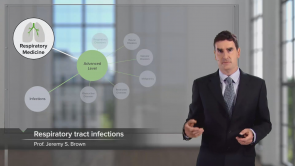Aggregate Supply and Demand

Über den Vortrag
Der Vortrag „Aggregate Supply and Demand“ von James DeNicco ist Bestandteil des Kurses „Principles of Macroeconomics (EN)“. Der Vortrag ist dabei in folgende Kapitel unterteilt:
- Introduction: Aggregate Supply and Demand
- Business Cycles
- The Aggregate Demand Curve
- The Long & Short Run Aggregate Supply Curve
- Recovery Through Wages / Shifts in Long Run Aggregate Supply
Quiz zum Vortrag
In the Aggregate Supply & Demand model the _________ curve is a vertical line with respect to the aggregate price level.
- Long-run Aggregate Supply
- Aggregate Demand
- Long-run Aggregate Demand
- Short-run Aggregate Supply
The Wealth Effect tells us that as prices increase, consumption _________ and aggregate demand _________.
- Decreases; decreases
- Increases; increases
- Increases; decreases
- Decreases; increases
The Interest Rate Effect tells us that as prices increase, the real interest rate _________ , investment _________ and aggregate demand _________.
- Increases; decreases; decreases
- Decreases; increases; increases
- Increases; increases; increases
- Decreases; decreases; decreases
Which is a reason that Short Run Aggregate Supply is upward sloping?
- Sticky Wages
- Wealth Effect
- Interest Rate Effect
- Exchange Rate Effect
The sticky wages theory says that _________ wages cannot adjust immediately as prices rise, which drives _________ wages _________.
- Nominal; real; down
- Nominal; nominal; up
- Real; nominal; down
- Real; real; down
Kundenrezensionen
5,0 von 5 Sternen
| 5 Sterne |
|
5 |
| 4 Sterne |
|
0 |
| 3 Sterne |
|
0 |
| 2 Sterne |
|
0 |
| 1 Stern |
|
0 |




